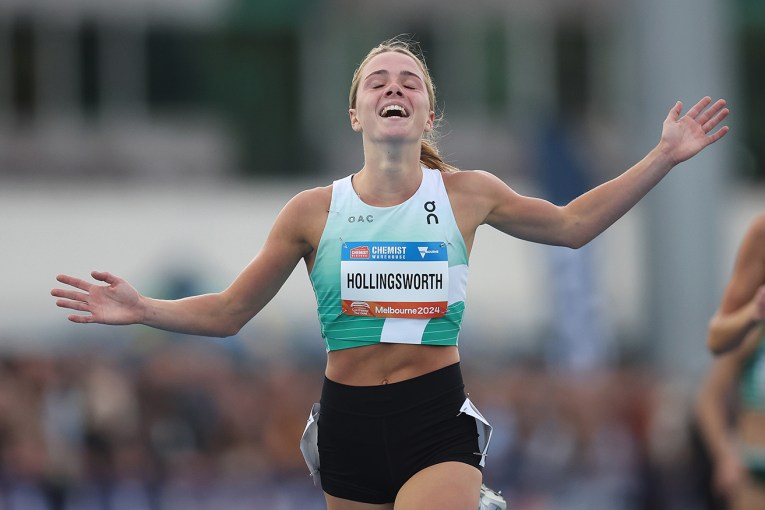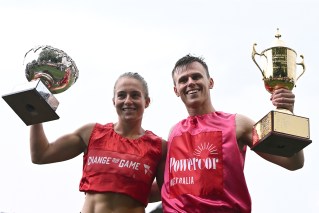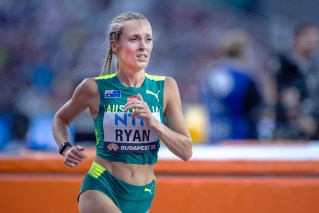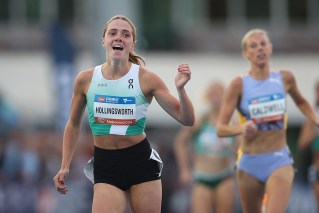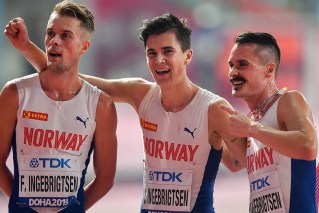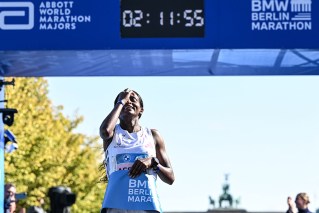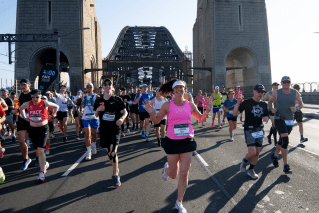‘Not if, but when’: The amazing sporting landmark set to be broken

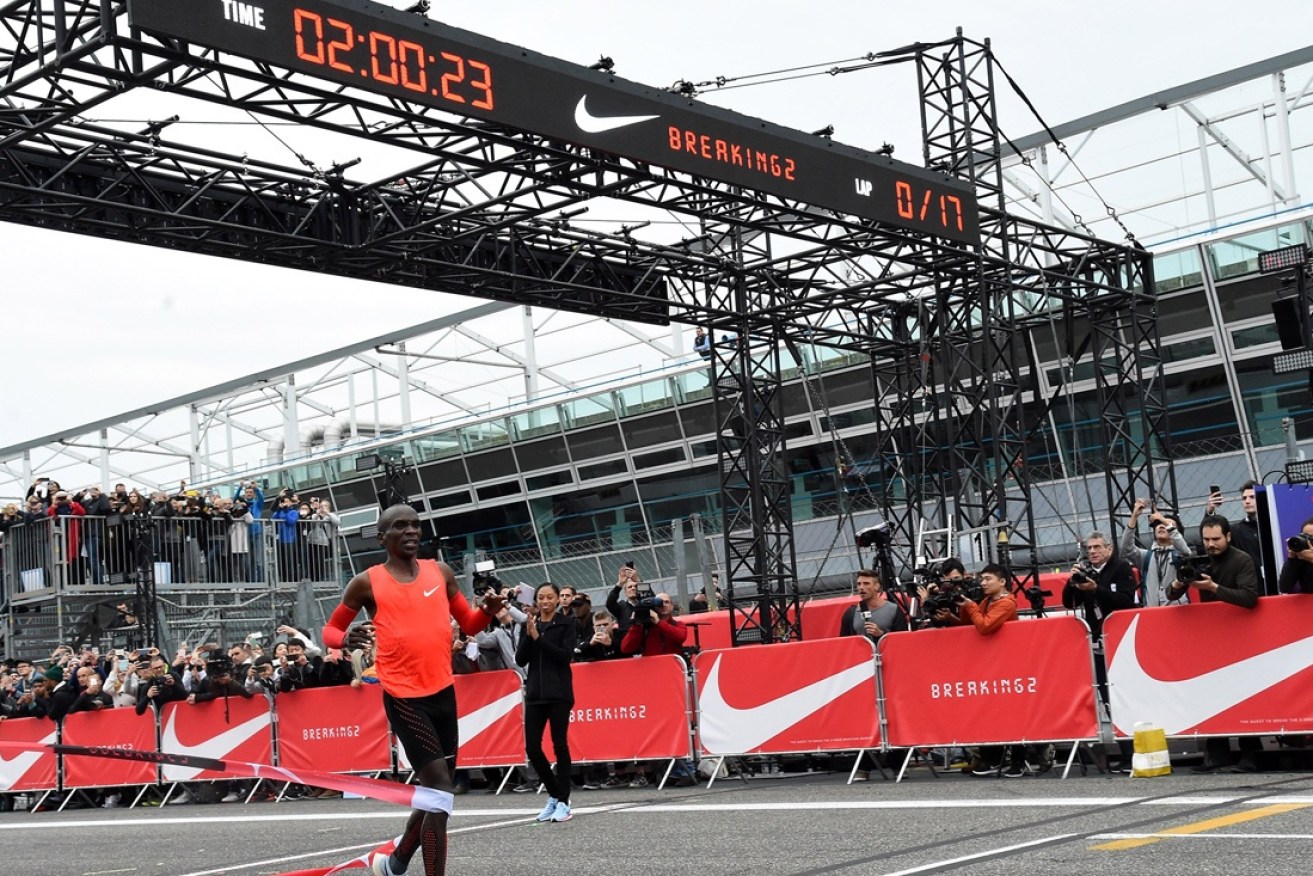
Eliud Kipchoge crosses the finish line (his time was later adjusted). Photo: Getty
Olympic Games marathon champion Eliud Kipchoge came so close. So close to history.
On Saturday, the 32-year-old from Kenya came within 25 seconds of running a sub two-hour marathon at a Nike event in Monza, Italy.
The feat has never been achieved before, with the current world record of two hours, two minutes and 57 seconds held by Kipchoge’s countryman Dennis Kimetto.
Kipchoge beat that easily, but his feat won’t be officially recognised by athletics’ governing body, the IAAF, due to a system of ‘pacemaking’ used in the run – that is the use of other runners at specific intervals to ensure the pace of the main runners does not drop off.
But Kipchoge’s effort, and the worldwide attention it generated, means the two-hour mark – considered as impossible for many years – will be broken soon, according to legendary Australian marathon runner Steve Moneghetti.
“He ran pretty fast – it was an amazing effort,” Moneghetti told The New Daily.
“The attention is great for marathon running and the flow-on effect is massive, with athletics and distance running to be the winners out of this.
“Kipchoge could not get there … he was gone. Even though 25 seconds seems like nothing, he just couldn’t get there.
“It’s not if, but a matter of when [the two-hour record is broken].
“I thought it would take another 10 to 12 years but it’s probably been fast-tracked. It’s likely to happen in a city marathon.
“I’ll be a bit conservative and say in maybe five or six years.”

Kipchoge runs with the assistance of ‘pacemakers’. Photo: Getty
How did he do it?
Kipchoge (2:00:25) ran with two other star runners, Zersenay Tadese of Eritrea (2:06:51) and Lelisa Desisaran of Ethiopia (2:14:10).
All three were wearing Nike’s new ‘Zoom Vaporfly Elite’ runners, a light product that will make any runner up to 4 per cent faster, the company claims.
They ran on the Formula One track in Monza, where the fastest lap in the history of the sport was completed, and had groups of ‘pacemakers’ to create the pace and shield them from wind.
Runners were also aided by a car that beamed a green line on the road behind it to show the required speed for the ambitious target.
It's called the Temple of Speed for a reason 💨
Eliud Kipchoge runs a 2:00.24 at Monza, the fastest recorded marathon #F1 #Breaking2 pic.twitter.com/iklSgk2SaO
— Formula 1 (@F1) May 6, 2017
“My mind was on under two hours but in the last two laps, I fell 10 seconds behind the pace,” Kipchoge said afterwards.
“This journey has been good. It has been hard. It has been seven months of hard preparation. It has been history in the world of sport.”
Moneghetti, who won gold for Australia in the marathon at the 1994 Commonwealth Games in Canada, expects some of the tactics used by Nike to be replicated elsewhere.
“That’s the key take out for me – that the strategy and methods used will probably become more common place,” he said.
Why are Nike and Adidas involved?
Nike have splashed the cash on their project, which includes signing the runners, and Adidas have followed suit.
The sportswear giant has also released its new shoe – the “Adizero Sub2” – and Moneghetti says both brands want to attach themselves to history.
“Nike and Adidas are effectively running companies – and this is the next barrier,” he said.
“They’re not going to be able to get someone to run a 5km in 12 minutes, or a 10km in 26 minutes, so this is the next holy grail for athletics.”
Moneghetti added that when the sub-two minute time is achieved, it will rival Roger Bannister’s effort to become the first man to run a four-minute mile in May 1954, still seen as one of the most iconic moments in world sport.
